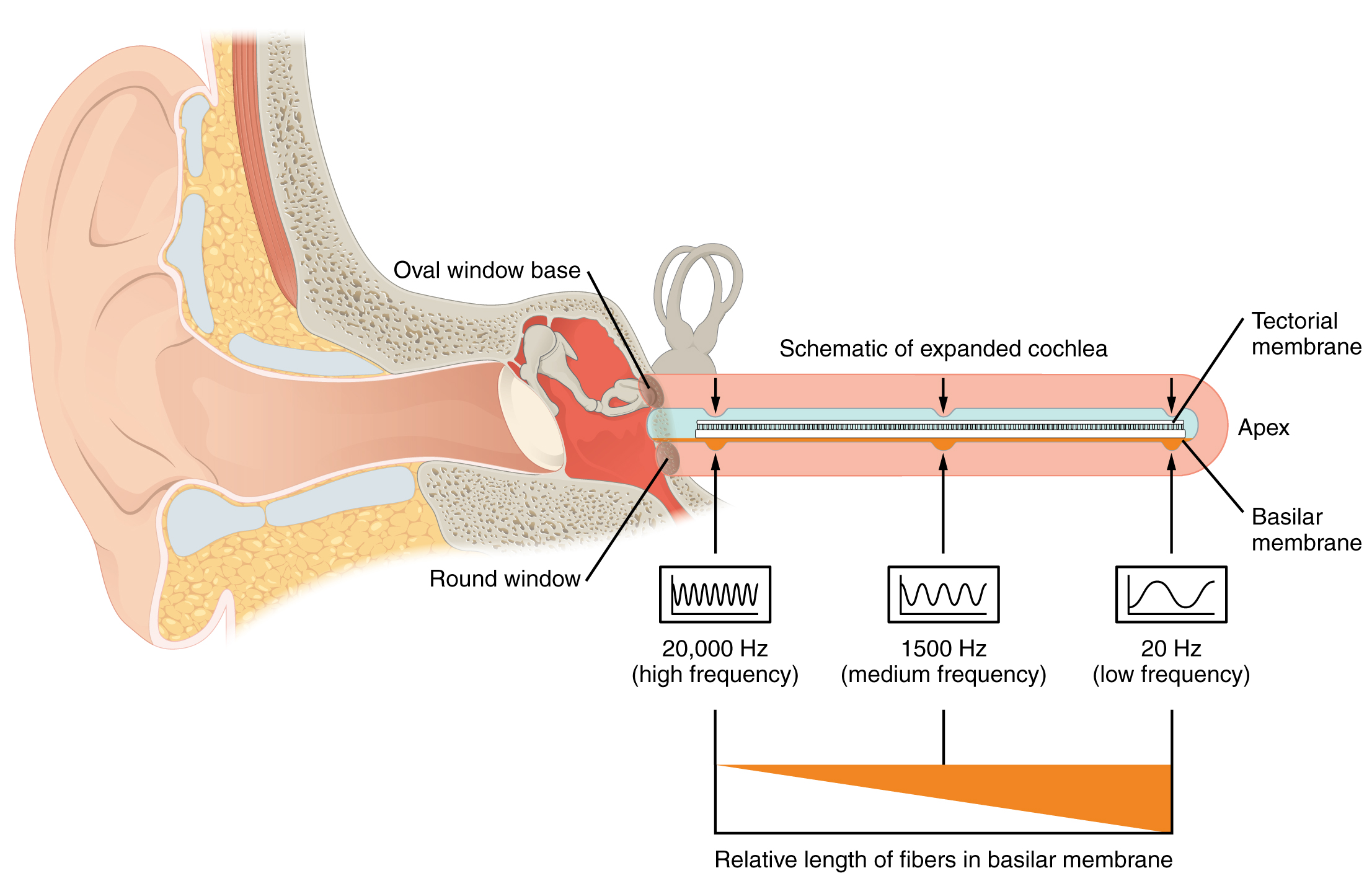Hearing Loss and Central Auditory Processing
51
Learning Objectives
Be able to discuss the evidence why masking happens only in similar frequencies.
Understand the implications of motion of the basilar membrane.
Understand what place coding is.
One of the most important principles of hearing—frequency analysis—is established in the cochlea. In a way, the action of the cochlea can be likened to that of a prism: the many frequencies that make up a complex sound are broken down into their constituent frequencies, with low frequencies creating maximal basilar-membrane vibrations near the apex of the cochlea and high frequencies creating maximal basilar-membrane vibrations nearer the base of the cochlea. This decomposition of sound into its constituent frequencies, and the frequency-to-place mapping, or “tonotopic” representation, is a major organizational principle of the auditory system (place coding), and is maintained in the neural representation of sounds all the way from the cochlea to the primary auditory cortex. The decomposition of sound into its constituent frequency components is part of what allows us to hear more than one sound at a time.
Masking is the process by which the presence of one sound makes another sound more difficult to hear. We all encounter masking in our everyday lives, when we fail to hear the phone ring while we are taking a shower, or when we struggle to follow a conversation in a noisy restaurant. In general, a more intense sound will mask a less intense sound, assuming that the frequency content of the sounds overlap. In psychophysical studies, a tone only masks, or elevates thresholds for, nearby tones. This is taken as evidence that frequencies that are widely separated are processed separately. In other words, the activity in the cochlea produced by a masking sound “swamps” that produced by the target sound, making the target sound harder to perceive.

The physical origin of this phenomenon is likely the motion of the basilar membrane. Support for this idea comes from the upward spread of masking—interference is stronger in one direction than the other, and this matches asymmetries in how the basilar membrane moves. Because of the way that filtering in the cochlea functions, low-frequency sounds are more likely to mask high frequencies than vice versa, particularly at high sound intensities. The loss of sharp cochlear tuning that often accompanies cochlear damage leads to broader filtering and more masking—a physiological phenomenon that is likely to contribute to the difficulties experienced by people with hearing loss in noisy environments (Moore, 2007).
CC LICENSED CONTENT, SHARED PREVIOUSLY
NOBA, Hearing
Provided by: University of Minnesota
URL: https://nobaproject.com/modules/hearing
License: CC BY-NC-SA 4.0
Adapted by: Kori Skrypek
Cheryl Olman PSY 3031 Detailed Outline
Provided by: University of Minnesota
Download for free at http://vision.psych.umn.edu/users/caolman/courses/PSY3031/
License of original source: CC Attribution 4.0
Adapted by: Kori Skrypek

